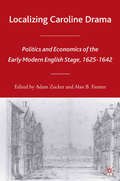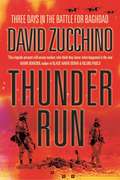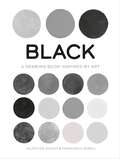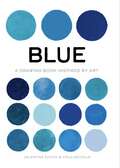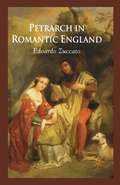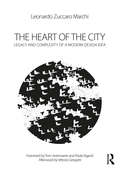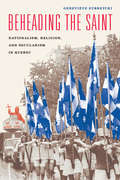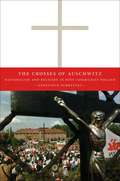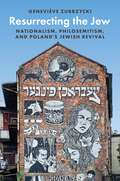- Table View
- List View
Localizing Caroline Drama: Politics and Economics of the Early Modern English Stage, 1625-1642 (Early Modern Cultural Studies 1500–1700)
by A. Zucker A. FarmerThis book redefines the plays and theatrical culture of the years 1625 to 1642 as something more than simply post-Shakespearean in character. Scholars reveal the drama's mixture of political engagement, urbane cosmopolitanism, and commercial ingenuity. They urge us to recalibrate our histories to account for the innovations of the Caroline period.
Thunder Run: The Armored Strike to Capture Baghdad
by David ZucchinoThunder Run is the story of how, with fewer than a thousand men, and facing dug-in Iraqi forces, the Second ('Tusker') Brigade of the Third Infantry Division punched a hole through the heart of Baghdad with a high-speed charge to Saddam Hussein's Presidential Palace and Republican Guard headquarters.The product of dozens of interviews with commanders and men from the Second Brigade, it is more than just a book about a single battle. It is a riveting account of how soldiers respond under fire and and how human frailties are magnified in a war zone. Many people believe that Baghdad was taken with a minimum of effort. But for the Tusker Brigade it was a cruel and terrifying three days of urban warfare. Thunder Run tells the inside story of one of the most brutal and decisive battles in combat history and the biggest armoured battle involving American troops since the Vietnam War. It is an unputdownable, unforgettable first-hand account of how a single armoured brigade of fewer than a thousand men captured an Arab capital defended by one of the world's largest armies.
Black: A Drawing Book Inspired by Art (True Color)
by Valentina ZucchiMany people crave a creative outlet, but more often than not, don't know where to start. In Black, Valentina Zucchi and Francesca Zoboli invite you to nurture your creativity and build your confidence by taking inspiration from works of art that celebrate the most enigmatic colour of all, black.Black is a special colour: rich, glossy and elegant on the one hand; strict, sensible and solemn on the other. Throughout the book, Valentina and Francesca provide creative and fun prompts – many based on famous works of art – which will encourage you to draw or paint on the pages using various techniques. Packed with inspiration from the world's most celebrated artists, including Francisco Goya, Jackson Pollock, Rembrandt and more, you will discover the many meanings of black and just some of the ways it can be used to express your creative passion.Black is a short course in unlocking your creative self – perfect for budding artists of all ages who are keen to try out different techniques and materials and begin their artistic journey.
Blue: A Drawing Book Inspired by Art (True Color)
by Valentina ZucchiMany people crave a creative outlet, but more often than not, don't know where to start. In Blue, Valentina Zucchi and Viola Niccolai invite you to nurture your creativity and build your confidence by taking inspiration from modern works of art that celebrate blue, perhaps the best-loved colour of all.Discover the most important blues, ones that the all-time greatest painters have used in order to paint velvet, mountains, Madonnas, angels, skies and storms. Throughout the book, Valentina and Viola provide creative and fun prompts – many based on famous works of art – which will encourage you to draw or paint on the pages using various techniques. Packed with inspiration from the world's most celebrated artists, including the ancient Egyptians, John Constable, Pablo Picasso, Vincent van Gogh, Yves Klein and more, you will discover the many meanings of blue and just some of the innumerable stories that bring it to life.Blue is a short course in unlocking your creative self – perfect for budding artists of all ages who are keen to try out different artistic techniques and materials, and begin their artistic journey.
Antonio Gramsci and the Ancient World (Routledge Monographs in Classical Studies)
by Emilio Zucchetti Anna Maria CiminoAntonio Gramsci and the Ancient World explores the relationship between the work of the Italian Marxist thinker Antonio Gramsci and the study of classical antiquity. The collection of essays engages with Greek and Roman history, literature, society, and culture, offering a range of perspectives and approaches building on Gramsci’s theoretical insights, especially from his Prison Notebooks. The volume investigates both Gramsci’s understanding and reception of the ancient world, including his use of ancient sources and modern historiography, and the viability of applying some of his key theoretical insights to the study of Greek and Roman history and literature. The chapters deal with the ideas of hegemony, passive revolution, Caesarism, and the role of intellectuals in society, offering a complex and diverse exploration of this intersection. With its fascinating mixture of topics, this volume will be of great interest to students and scholars of classics, ancient history, classical reception studies, Marxism and history, and those studying Antonio Gramsci’s works in particular.
Antonio Gramsci and the Ancient World (Routledge Monographs in Classical Studies)
by Emilio Zucchetti Anna Maria CiminoAntonio Gramsci and the Ancient World explores the relationship between the work of the Italian Marxist thinker Antonio Gramsci and the study of classical antiquity. The collection of essays engages with Greek and Roman history, literature, society, and culture, offering a range of perspectives and approaches building on Gramsci’s theoretical insights, especially from his Prison Notebooks. The volume investigates both Gramsci’s understanding and reception of the ancient world, including his use of ancient sources and modern historiography, and the viability of applying some of his key theoretical insights to the study of Greek and Roman history and literature. The chapters deal with the ideas of hegemony, passive revolution, Caesarism, and the role of intellectuals in society, offering a complex and diverse exploration of this intersection. With its fascinating mixture of topics, this volume will be of great interest to students and scholars of classics, ancient history, classical reception studies, Marxism and history, and those studying Antonio Gramsci’s works in particular.
Petrarch in Romantic England
by E. ZuccatoThe Petrarchan revival in Romantic England was a unique phenomenon which involved an impressive number of scholars, translators and poets. This book analyses the way Petrarch was read and re-written by Romantic figures. The result is a history of the Romantic-era sonnet and a new lens for understanding English Romantic poetry.
The Heart of the City: Legacy and Complexity of a Modern Design Idea
by Leonardo Zuccaro MarchiThe Heart of the City concept, which was introduced at CIAM 8 in 1951, has played an important role in architectural and urban debates. The Heart became the most important of the organic references used in the 1950s for defining a theory of urban form. This book focuses on both the historical and theoretical reinterpretation of this seminal concept. Divided into two main sections, both looking at differing ways in which the Heart has influenced more recent urban thinking, it illustrates the continuity and the complexities of the Heart of the City. In doing so, this book offers a new perspective on the significance of public space and shows how The Heart of the City still resonates closely with contemporary debates about centrality, identity and the design of public space. It would be of interest to architects, academics and students of urban design and planning.
The Heart of the City: Legacy and Complexity of a Modern Design Idea
by Leonardo Zuccaro MarchiThe Heart of the City concept, which was introduced at CIAM 8 in 1951, has played an important role in architectural and urban debates. The Heart became the most important of the organic references used in the 1950s for defining a theory of urban form. This book focuses on both the historical and theoretical reinterpretation of this seminal concept. Divided into two main sections, both looking at differing ways in which the Heart has influenced more recent urban thinking, it illustrates the continuity and the complexities of the Heart of the City. In doing so, this book offers a new perspective on the significance of public space and shows how The Heart of the City still resonates closely with contemporary debates about centrality, identity and the design of public space. It would be of interest to architects, academics and students of urban design and planning.
Empire of Enchantment: The Story of Indian Magic
by John ZubrzyckiIndia's association with magicians goes back thousands of years. Conjurors and illusionists dazzled the courts of Hindu maharajas and Mughal emperors. As British dominion spread over the subcontinent, such wonder-workers became synonymous with India. Western magicians appropriated Indian attire, tricks and stage names; switching their turbans for top hats, Indian jugglers fought back and earned their grudging respect. This book tells the extraordinary story of how Indian magic descended from the realm of the gods to become part of daily ritual and popular entertainment across the globe. Recounting tales of levitating Brahmins, resurrections, prophesying monkeys and "the most famous trick never performed," Empire of Enchantment vividly charts Indian magic's epic journey from street to the stage. This heavily illustrated book tells the extraordinary, untold story of how Indian magic descended from the realm of the gods to become part of daily ritual and popular entertainment across the globe. Drawing on ancient religious texts, early travelers' accounts, colonial records, modern visual sources, and magicians' own testimony, Empire of Enchantment is a vibrant narrative of India's magical traditions, from Vedic times to the present day.
Empire of Enchantment: The Story of Indian Magic
by John ZubrzyckiIndia's association with magicians goes back thousands of years. Conjurors and illusionists dazzled the courts of Hindu maharajas and Mughal emperors. As British dominion spread over the subcontinent, such wonder-workers became synonymous with India. Western magicians appropriated Indian attire, tricks and stage names; switching their turbans for top hats, Indian jugglers fought back and earned their grudging respect. This book tells the extraordinary story of how Indian magic descended from the realm of the gods to become part of daily ritual and popular entertainment across the globe. Recounting tales of levitating Brahmins, resurrections, prophesying monkeys and "the most famous trick never performed," Empire of Enchantment vividly charts Indian magic's epic journey from street to the stage. This heavily illustrated book tells the extraordinary, untold story of how Indian magic descended from the realm of the gods to become part of daily ritual and popular entertainment across the globe. Drawing on ancient religious texts, early travelers' accounts, colonial records, modern visual sources, and magicians' own testimony, Empire of Enchantment is a vibrant narrative of India's magical traditions, from Vedic times to the present day.
Jadoowallahs, Jugglers and Jinns: A Magical History of India
by John Zubrzycki'India’s association with magic goes back thousands of years – from the seals of Mohenjodaro that depicted sorcerers and yogis, to the jugglers and acrobats that dazzled spectators at the courts of Hindu maharajas and Mughal emperors. Tales were told of ropes being thrown up in the air, strong enough for a boy to climb; of fakirs being buried alive for months and brought back to life; and of sanperas charming deadly cobras with their flutes. In the early nineteenth century, touring Indian magicians mesmerized audiences abroad, prompting generations of Western illusionists to emulate them.Jadoowallahs, Jugglers and Jinns: A Magical History of India tells the story of how Indian magic descended from the domain of the gods to become part of daily ritual and popular entertainment, and its transformation from the street to the stage culminating with the rise of the great P. C. Sorcar Sr.Drawing on ancient religious texts, colonial records, newspaper reports, journals and memoirs of Western and Indian magicians, John Zubrzycki offers us a vibrant narrativeon Indian magic from ancient times to the present day.
The Shortest History of India
by John Zubrzycki5,000 years of Indian historyFrom the ruins of ancient civilisations to an emerging global superpowerOne of the oldest civilisations and the largest democracy in the world, India is an amalgam of customs, races, castes, languages and spiritual beliefs, woven together over 5,000 years of wonderfully colossal and chaotic history. From the earliest humans and the Harappan civilisation to Muslim conquerors, the Great Mughals, British rule, the country’s struggle for autonomy and present-day hopes and challenges, John Zubrzycki masterfully condenses five millennia of deities, mutinies, wars, great empires, decadent dynasties, invasions, migrations, colonisation and independence into a fascinating, lively telling. He brings the complex and contrasting layers of Indian history to life through a well-known cast of characters – Buddha, Alexander the Great, Akbar, Clive, Tipu Sultan, Lakshmi Bai, Curzon, Jinnah, Mahatma Gandhi – against a backdrop of the ever-present Ganges, the desert forts of Rajasthan, the snow-covered Himalayas and the ruins of India’s fabled civilisations. From medicine to mathematics, philosophy to astronomy, literature to music, Buddhism to Bollywood, India has made its mark on Asia and the world. Its progress in tackling poverty and illiteracy have been impressive, but extraordinary challenges remain – not least the threat to its secular, democratic fabric. Only time will tell if India can overcome its political, social and religious tensions to rise again and become the next global superpower.
Beheading the Saint: Nationalism, Religion, and Secularism in Quebec
by Geneviève ZubrzyckiThrough much of its existence, Québec’s neighbors called it the “priest-ridden province.” Today, however, Québec society is staunchly secular, with a modern welfare state built on lay provision of social services—a transformation rooted in the “Quiet Revolution” of the 1960s. In Beheading the Saint, Geneviève Zubrzycki studies that transformation through a close investigation of the annual Feast of St. John the Baptist of June 24. The celebrations of that national holiday, she shows, provided a venue for a public contesting of the dominant ethno-Catholic conception of French Canadian identity and, via the violent rejection of Catholic symbols, the articulation of a new, secular Québécois identity. From there, Zubrzycki extends her analysis to the present, looking at the role of Québécois identity in recent debates over immigration, the place of religious symbols in the public sphere, and the politics of cultural heritage—issues that also offer insight on similar debates elsewhere in the world.
Beheading the Saint: Nationalism, Religion, and Secularism in Quebec
by Geneviève ZubrzyckiThrough much of its existence, Québec’s neighbors called it the “priest-ridden province.” Today, however, Québec society is staunchly secular, with a modern welfare state built on lay provision of social services—a transformation rooted in the “Quiet Revolution” of the 1960s. In Beheading the Saint, Geneviève Zubrzycki studies that transformation through a close investigation of the annual Feast of St. John the Baptist of June 24. The celebrations of that national holiday, she shows, provided a venue for a public contesting of the dominant ethno-Catholic conception of French Canadian identity and, via the violent rejection of Catholic symbols, the articulation of a new, secular Québécois identity. From there, Zubrzycki extends her analysis to the present, looking at the role of Québécois identity in recent debates over immigration, the place of religious symbols in the public sphere, and the politics of cultural heritage—issues that also offer insight on similar debates elsewhere in the world.
Beheading the Saint: Nationalism, Religion, and Secularism in Quebec
by Geneviève ZubrzyckiThrough much of its existence, Québec’s neighbors called it the “priest-ridden province.” Today, however, Québec society is staunchly secular, with a modern welfare state built on lay provision of social services—a transformation rooted in the “Quiet Revolution” of the 1960s. In Beheading the Saint, Geneviève Zubrzycki studies that transformation through a close investigation of the annual Feast of St. John the Baptist of June 24. The celebrations of that national holiday, she shows, provided a venue for a public contesting of the dominant ethno-Catholic conception of French Canadian identity and, via the violent rejection of Catholic symbols, the articulation of a new, secular Québécois identity. From there, Zubrzycki extends her analysis to the present, looking at the role of Québécois identity in recent debates over immigration, the place of religious symbols in the public sphere, and the politics of cultural heritage—issues that also offer insight on similar debates elsewhere in the world.
Beheading the Saint: Nationalism, Religion, and Secularism in Quebec
by Geneviève ZubrzyckiThrough much of its existence, Québec’s neighbors called it the “priest-ridden province.” Today, however, Québec society is staunchly secular, with a modern welfare state built on lay provision of social services—a transformation rooted in the “Quiet Revolution” of the 1960s. In Beheading the Saint, Geneviève Zubrzycki studies that transformation through a close investigation of the annual Feast of St. John the Baptist of June 24. The celebrations of that national holiday, she shows, provided a venue for a public contesting of the dominant ethno-Catholic conception of French Canadian identity and, via the violent rejection of Catholic symbols, the articulation of a new, secular Québécois identity. From there, Zubrzycki extends her analysis to the present, looking at the role of Québécois identity in recent debates over immigration, the place of religious symbols in the public sphere, and the politics of cultural heritage—issues that also offer insight on similar debates elsewhere in the world.
Beheading the Saint: Nationalism, Religion, and Secularism in Quebec
by Geneviève ZubrzyckiThrough much of its existence, Québec’s neighbors called it the “priest-ridden province.” Today, however, Québec society is staunchly secular, with a modern welfare state built on lay provision of social services—a transformation rooted in the “Quiet Revolution” of the 1960s. In Beheading the Saint, Geneviève Zubrzycki studies that transformation through a close investigation of the annual Feast of St. John the Baptist of June 24. The celebrations of that national holiday, she shows, provided a venue for a public contesting of the dominant ethno-Catholic conception of French Canadian identity and, via the violent rejection of Catholic symbols, the articulation of a new, secular Québécois identity. From there, Zubrzycki extends her analysis to the present, looking at the role of Québécois identity in recent debates over immigration, the place of religious symbols in the public sphere, and the politics of cultural heritage—issues that also offer insight on similar debates elsewhere in the world.
Beheading the Saint: Nationalism, Religion, and Secularism in Quebec
by Geneviève ZubrzyckiThrough much of its existence, Québec’s neighbors called it the “priest-ridden province.” Today, however, Québec society is staunchly secular, with a modern welfare state built on lay provision of social services—a transformation rooted in the “Quiet Revolution” of the 1960s. In Beheading the Saint, Geneviève Zubrzycki studies that transformation through a close investigation of the annual Feast of St. John the Baptist of June 24. The celebrations of that national holiday, she shows, provided a venue for a public contesting of the dominant ethno-Catholic conception of French Canadian identity and, via the violent rejection of Catholic symbols, the articulation of a new, secular Québécois identity. From there, Zubrzycki extends her analysis to the present, looking at the role of Québécois identity in recent debates over immigration, the place of religious symbols in the public sphere, and the politics of cultural heritage—issues that also offer insight on similar debates elsewhere in the world.
The Crosses of Auschwitz: Nationalism and Religion in Post-Communist Poland
by Geneviève ZubrzyckiIn the summer and fall of 1998, ultranationalist Polish Catholics erected hundreds of crosses outside Auschwitz, setting off a fierce debate that pitted Catholics and Jews against one another. While this controversy had ramifications that extended well beyond Poland’s borders, Geneviève Zubrzycki sees it as a particularly crucial moment in the development of post-Communist Poland’s statehood and its changing relationship to Catholicism. In The Crosses of Auschwitz, Zubrzycki skillfully demonstrates how this episode crystallized latent social conflicts regarding the significance of Catholicism in defining “Polishness” and the role of anti-Semitism in the construction of a new Polish identity. Since the fall of Communism, the binding that has held Polish identity and Catholicism together has begun to erode, creating unease among ultranationalists. Within their construction of Polish identity also exists pride in the Polish people’s long history of suffering. For the ultranationalists, then, the crosses at Auschwitz were not only symbols of their ethno-Catholic vision, but also an attempt to lay claim to what they perceived was a Jewish monopoly over martyrdom. This gripping account of the emotional and aesthetic aspects of the scene of the crosses at Auschwitz offers profound insights into what Polishness is today and what it may become.
The Crosses of Auschwitz: Nationalism and Religion in Post-Communist Poland
by Geneviève ZubrzyckiIn the summer and fall of 1998, ultranationalist Polish Catholics erected hundreds of crosses outside Auschwitz, setting off a fierce debate that pitted Catholics and Jews against one another. While this controversy had ramifications that extended well beyond Poland’s borders, Geneviève Zubrzycki sees it as a particularly crucial moment in the development of post-Communist Poland’s statehood and its changing relationship to Catholicism. In The Crosses of Auschwitz, Zubrzycki skillfully demonstrates how this episode crystallized latent social conflicts regarding the significance of Catholicism in defining “Polishness” and the role of anti-Semitism in the construction of a new Polish identity. Since the fall of Communism, the binding that has held Polish identity and Catholicism together has begun to erode, creating unease among ultranationalists. Within their construction of Polish identity also exists pride in the Polish people’s long history of suffering. For the ultranationalists, then, the crosses at Auschwitz were not only symbols of their ethno-Catholic vision, but also an attempt to lay claim to what they perceived was a Jewish monopoly over martyrdom. This gripping account of the emotional and aesthetic aspects of the scene of the crosses at Auschwitz offers profound insights into what Polishness is today and what it may become.
The Crosses of Auschwitz: Nationalism and Religion in Post-Communist Poland
by Geneviève ZubrzyckiIn the summer and fall of 1998, ultranationalist Polish Catholics erected hundreds of crosses outside Auschwitz, setting off a fierce debate that pitted Catholics and Jews against one another. While this controversy had ramifications that extended well beyond Poland’s borders, Geneviève Zubrzycki sees it as a particularly crucial moment in the development of post-Communist Poland’s statehood and its changing relationship to Catholicism. In The Crosses of Auschwitz, Zubrzycki skillfully demonstrates how this episode crystallized latent social conflicts regarding the significance of Catholicism in defining “Polishness” and the role of anti-Semitism in the construction of a new Polish identity. Since the fall of Communism, the binding that has held Polish identity and Catholicism together has begun to erode, creating unease among ultranationalists. Within their construction of Polish identity also exists pride in the Polish people’s long history of suffering. For the ultranationalists, then, the crosses at Auschwitz were not only symbols of their ethno-Catholic vision, but also an attempt to lay claim to what they perceived was a Jewish monopoly over martyrdom. This gripping account of the emotional and aesthetic aspects of the scene of the crosses at Auschwitz offers profound insights into what Polishness is today and what it may become.
The Crosses of Auschwitz: Nationalism and Religion in Post-Communist Poland
by Geneviève ZubrzyckiIn the summer and fall of 1998, ultranationalist Polish Catholics erected hundreds of crosses outside Auschwitz, setting off a fierce debate that pitted Catholics and Jews against one another. While this controversy had ramifications that extended well beyond Poland’s borders, Geneviève Zubrzycki sees it as a particularly crucial moment in the development of post-Communist Poland’s statehood and its changing relationship to Catholicism. In The Crosses of Auschwitz, Zubrzycki skillfully demonstrates how this episode crystallized latent social conflicts regarding the significance of Catholicism in defining “Polishness” and the role of anti-Semitism in the construction of a new Polish identity. Since the fall of Communism, the binding that has held Polish identity and Catholicism together has begun to erode, creating unease among ultranationalists. Within their construction of Polish identity also exists pride in the Polish people’s long history of suffering. For the ultranationalists, then, the crosses at Auschwitz were not only symbols of their ethno-Catholic vision, but also an attempt to lay claim to what they perceived was a Jewish monopoly over martyrdom. This gripping account of the emotional and aesthetic aspects of the scene of the crosses at Auschwitz offers profound insights into what Polishness is today and what it may become.
Resurrecting the Jew: Nationalism, Philosemitism, and Poland’s Jewish Revival (Princeton Studies in Cultural Sociology #18)
by Geneviève ZubrzyckiAn in-depth look at why non-Jewish Poles are trying to bring Jewish culture back to life in Poland todaySince the early 2000s, Poland has experienced a remarkable Jewish revival, largely driven by non-Jewish Poles with a passionate new interest in all things Jewish. Klezmer music, Jewish-style restaurants, kosher vodka, and festivals of Jewish culture have become popular, while new museums, memorials, Jewish studies programs, and Holocaust research centers reflect soul-searching about Polish-Jewish relations before, during, and after the Holocaust. In Resurrecting the Jew, Geneviève Zubrzycki examines this revival and asks what it means to try to bring Jewish culture back to life in a country where 3 million Jews were murdered and where only about 10,000 Jews now live.Drawing on a decade of participant-observation in Jewish and Jewish-related organizations in Poland, a Birthright trip to Israel with young Polish Jews, and more than a hundred interviews with Jewish and non-Jewish Poles engaged in the Jewish revival, Resurrecting the Jew presents an in-depth look at Jewish life in Poland today. The book shows how the revival has been spurred by progressive Poles who want to break the association between Polishness and Catholicism, promote the idea of a multicultural Poland, and resist the Far Right government. The book also raises urgent questions, relevant far beyond Poland, about the limits of performative solidarity and empathetic forms of cultural appropriation.
